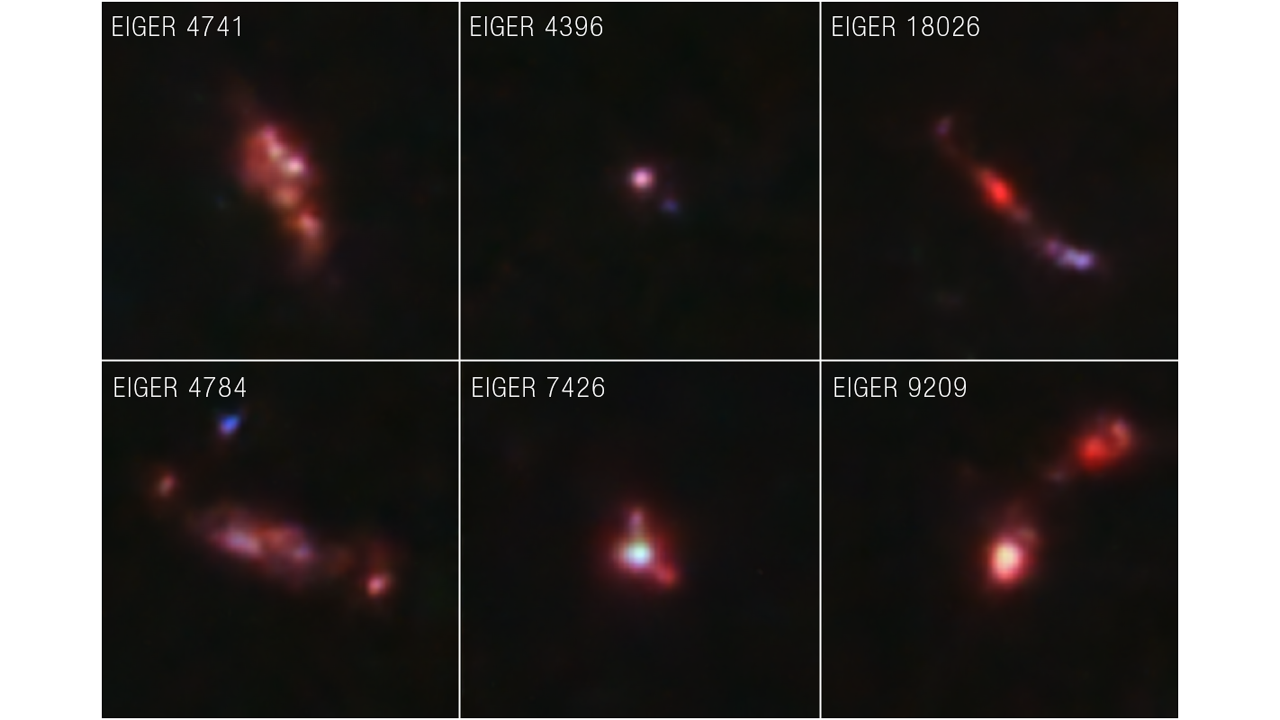James Webb Space Telescope Feed Post
Distant Galaxy Samples Near Quasar J0100+2802 (NIRCam Image)
The James Webb Space Telescope has returned extraordinarily detailed images and spectra of galaxies that existed when the universe was only 900 million years old. “In Webb’s near-infrared image, we can see structures in every individual galaxy that the telescope detected,” shared Jorryt Matthee of ETH Zürich. “Webb is showing us the adventurous youth of these early galaxies.” These galaxies look more chaotic than those in the nearby universe – they are clumpy and often elongated. These galaxies are also younger and are actively forming stars. The stars Webb detected are all more massive, which may lead to an abundance of colorful supernovae shooting off in these galaxies. These results were announced by members of the Emission-line galaxies and Intergalactic Gas in the Epoch of Reionization (EIGER) team. Webb’s NIRCam (Near-Infrared Camera) image and data known as spectra helped the team fully define 117 galaxies in this field. NASA, ESA, CSA, Simon Lilly (ETH Zurich), Daichi Kashino (Nagoya University), Jorryt Matthee (ETH Zurich), Christina Eilers (MIT), Rongmon Bordoloi (NCSU), Ruari Mackenzie (ETH Zurich) Credit: STScI
